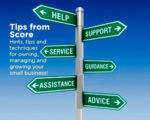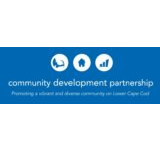Increasing e-Blasts Open Rates
 Question: I use email to communicate with my prospects and clients. How can I increase the number of opens, messages read, and recipients that are taking the call to action?
Question: I use email to communicate with my prospects and clients. How can I increase the number of opens, messages read, and recipients that are taking the call to action?
Answer: Email is the most frequently used communication vehicle in most small business’ marketing communications toolbox. It is less intrusive than a phone call or a text message and is convenient providing an easy method for a response. Here are some ideas for getting more of your messages opened and read:
Target your subject line and make it specific. Most email recipients read the subject line and make a decision whether to hit the delete button or read the message. Make the subject line short, specific and about your target audience. In the subject line promise something beneficial to the reader, “if you read this email, you’ll learn three ways to write more effective emails.” Use power words, i.e., action words like “learn” and use digits “3.” These power words will help your reader focus on your message.
Keep it brief. Most people don’t like to read long missives. Stick to the topic. State your position and ask for the action. Sometimes the entire message can be in the subject line? “Free to talk now? It’s 10:00 am.” Sometimes the best way to achieve your email goal is to ask questions of the reader, Pretend you are face-to-face. What would you ask them to achieve your goal?
Don’t be a time waster. Time is the most precious commodity that people have today. Time poverty affects us all. Send an email only when you have something important to say. Don’t try to be clever. Simple, straightforward communications work best. The easiest way to be on someone’s “delete” list is to send them messages that have no value to them.
Include bullet points. Some recipients get bogged down in reading paragraphs of information. State your position and then use bullet points to provide details. It makes it easier to read and easier to respond and take your call to action.
Include a reference. If you are emailing someone you don’t know personally, identify how you are connected. “We met at a reception for the Philanthropy Partnership.” Give them a hint of how you know one another. Personalize the email. “Good AM. I hope it is as beautiful a day in (wherever they are) as it is here on Cape Cod.” They will tend to read messages from someone they know or have some connection vs. a cold call email.
Be trustworthy. If you are trying to sell something to someone, tell them up front that this is a solicitation for sales or that periodically in our monthly newsletter, you will be offering specials for our products and/or services.
Learn from those that do it well. Subscribe to a variety of email newsletters and see how others entice their audience to open and read their messages.
Be aware of the “tone of voice” of your email. Your choice words, phrasing, punctuation, capitalization all meta-messages. If you are sending an email that is critical in its nature, then you might want to re-read the message before sending to make sure its tone is acceptable. Remember, emails are copied, forwarded and saved.
Check for typos. An easy way for your email to be deleted is to have typos and grammatical errors that are a turn-off to the reader. Proofread your emails before sending.
Everyone’s email inbox is overflowing. Nobody is sitting waiting for your email. Because time is precious, make sure your email messages are important, timely, focused and communicate easily what you need or want from the recipient.
Sources of additional information on email marketing: Henneke Duistermaat http://www.cityblogger.com and Jacqueline Whitemore http://www.entrepreneur.com











